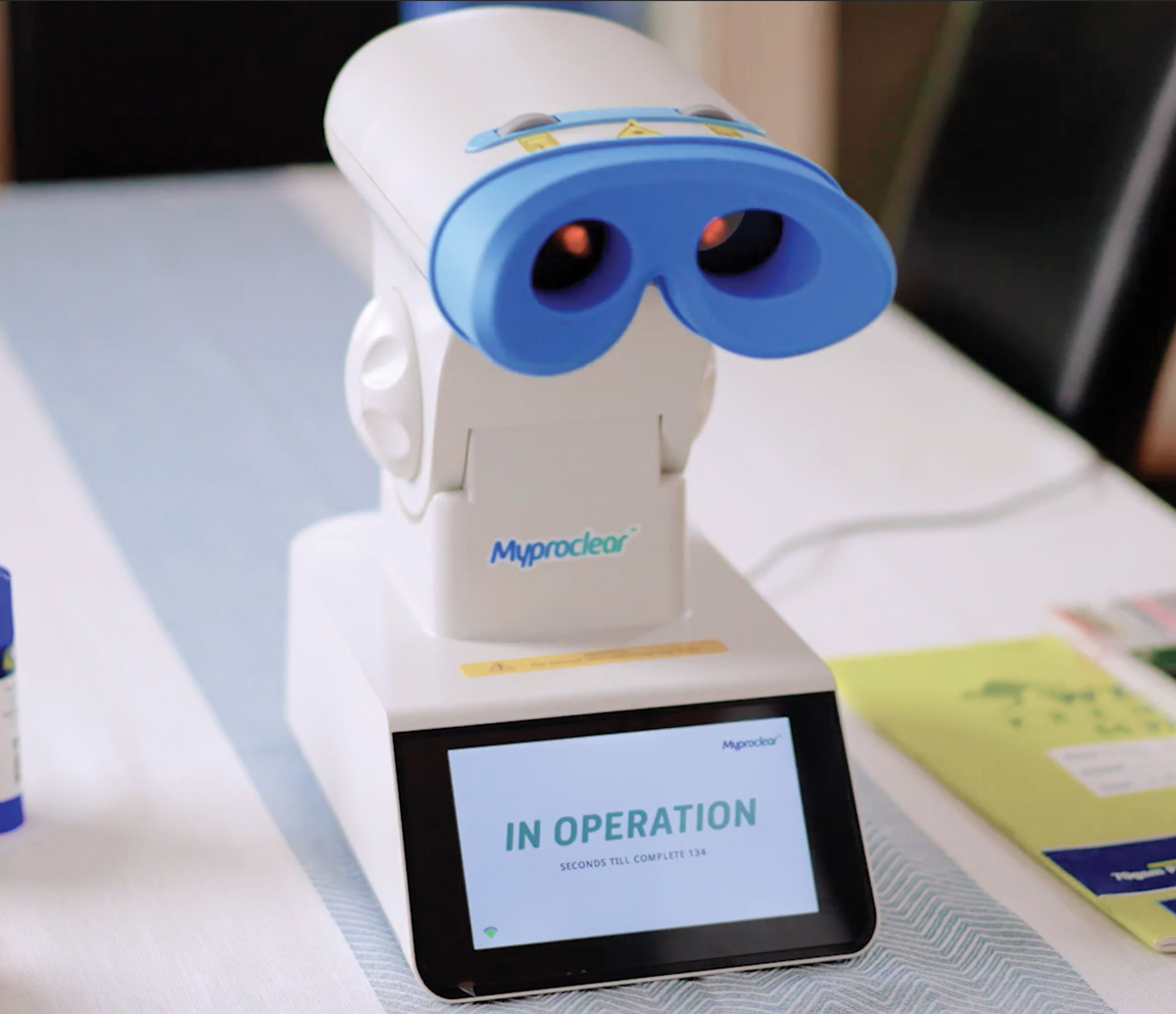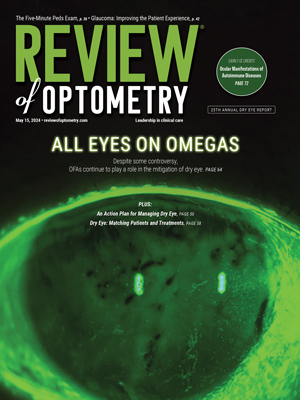 |
| The researchers noted a possible dose response to therapy, in addition to overall safety and efficacy. Photo: Eyerising International. Click image to enlarge. |
As the prevalence of myopia continues to grow, there is a greater need for treatments to slow progression of or reduce incidence of the condition. Previous studies have shown a difference in the mean change in the spherical equivalent refraction (SER) between treatments such as atropine and low-level red light (LLRL). New research published in JAMA Ophthalmology evaluating the efficacy and safety of daily LLRL for one year found slowing of progression in both SER and axial length (AL) with no safety concerns.
A total of 336 children between the ages of six and 12 were randomly allocated into the LLRL group or control group in a 1:1 ratio. The control group contained 86 female patients and the treatment group contained 90 female patients with the mean age of nine. A total of 161 in the LLRL group and 159 in the control group returned for the six-month follow-up. A total of 157 in the LLRL group and 152 in the control group returned for the 12-month follow-up.
The mean change in SER among untreated controls was almost 1D more myopic, and these subjects also gained about one-third of a millimeter in axial length. “These findings suggest daily use of 650-nm LLRL for one year can slow progression of SER and AL without safety concerns identified,” the authors explained in their paper for the journal. “In terms of AL and SER, children with myopia benefit 30% or more from 650-nm intervention treatment than children without myopia,” the authors explained.
The authors noted there may be a dose-response effect between red light use and myopia control. “In a previous study that used 650-nm LLRL five days per week, the one-year mean difference in AL between the treatment and control groups was 0.26mm; however, in the present study, with a higher frequency of seven days per week, the one-year mean difference in AL was 0.37mm,” the authors noted.
In all these studies, the participants were of similar age, the duration of a single intervention was the same (three minutes) and the power of the laser entering the pupil was the same (0.29mW). One of the studies showed a median compliance of 75%, and 14.2% of the patients had a compliance rate less than 50%. In this current study, the median compliance was 86% and the lowest compliance was 63%. The higher compliance may explain why the effect in this study seems better than that in previous studies, the authors suggested.
Three children reported seeing after images and four children reported feeling strong light; otherwise, no adverse events occurred. OCT and eye fundus images revealed no structural damage to the retina and there was no decrease in the uncorrected distance visual acuity of children in the LLRL group, suggesting no functional damage.
“Considering that every intervention has its drawbacks (e.g, atropine causes sensory discomfort, orthokeratology lenses cause corneal staining or microbial keratitis), 650-nm LLRL may have a good safety profile if these results can be duplicated at sites independent of the institution that has a patent on the device used,” the authors explained.
“Confirmation of these findings at independent sites seems warranted, as well as determining whether these effects can be sustained with or without continued treatment and whether LLRL has any effect on pathological myopia,” the authors concluded.
Cao K, Tian L, M DL, et al. Daily low-level red light for spherical equivalent error and axial length in children with myopia. JAMA Ophthamol. April 25, 2024. [Epub ahead of print.] |

